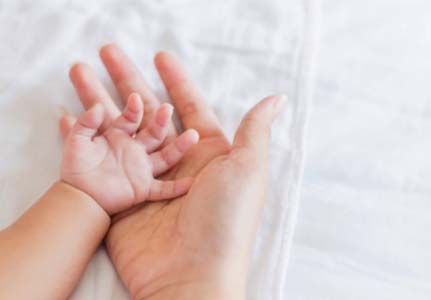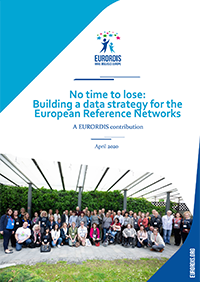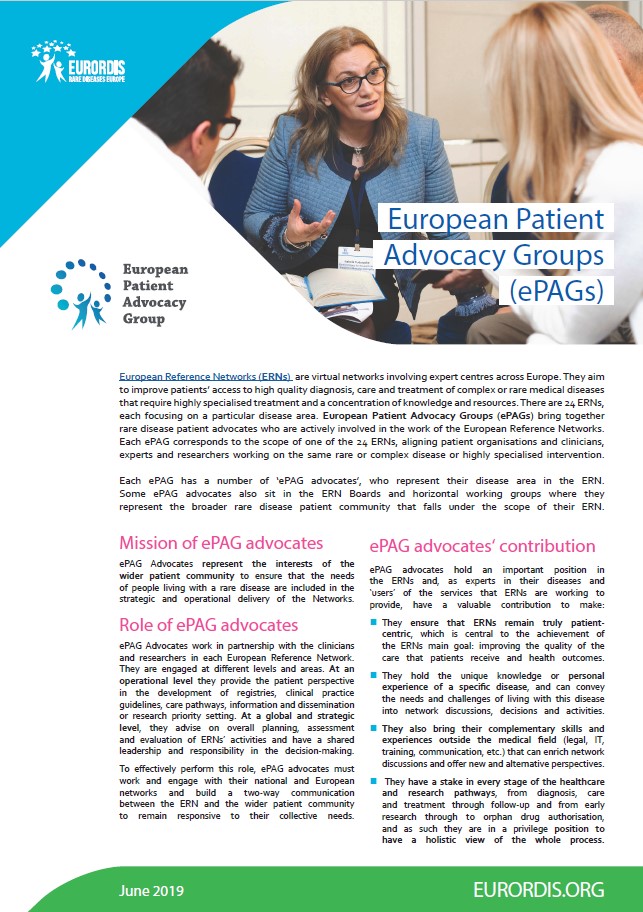European Reference Networks
Why are European Reference Networks a priority for people living with a rare disease?
Finding the right expert for a rare disease and accessing care remains a challenge for many of the 30 million people living with a rare disease in Europe. Often the only doctor who has expertise on their disease is located in a different country.
To address these challenges, the EU created the European Reference Networks (ERNs). An ERN is a network of healthcare providers that connects doctors and researchers virtually across borders, so that expertise travels rather than the patient.
There are only 150 cases of Ring-20 syndrome and they are spread across the world. The European Reference Networks have created a structure that means patients in Europe can access highly specialised expertise on their disease, no matter where the doctor is.”
Allison Watson, ePAG Patient Advocate in the ERN EpiCARE.
About European Reference Networks
A groundbreaking initiative and an illustration of the value the EU can provide for its citizens, the ERNs connect hundreds of healthcare providers from across the EU to ensure that expert knowledge travels across borders so that patients no longer need to.
ERNs are first and foremost healthcare networks with the objective of improving patients’ access to diagnosis, highly specialised healthcare and treatment, specifically in the field of rare diseases and complex conditions.
They facilitate both the dissemination and exchange of knowledge and experience (when clinicians provide specialist advice and review cases, develop new clinical practice guidelines, or run trainings) and the generation of new knowledge (when clinicians share clinical outcomes and conduct research studies).
Through the ERNs, a doctor can now access existing expert knowledge from another country on a patient’s disease. To review a patient’s diagnosis and treatment, ERN coordinators convene ‘virtual’ advisory panels of medical specialists across different disciplines, using a dedicated IT platform.
ERNs are also gradually developing their research capacities building Clinical Research Networks within each ERN to increase their collaborative activities in the area of clinical research.
There are 24 ERNs according to disease groupings:
- ERN BOND (ERN on bone disorders)
- ERN CRANIO (ERN on craniofacial anomalies and ENT disorders)
- Endo-ERN (ERN on endocrine conditions)
- ERN EpiCARE (ERN on epilepsies)
- ERKNet (ERN on kidney diseases)
- ERN-RND (ERN on neurological diseases)
- ERNICA (ERN on inherited and congenital anomalies)
- ERN LUNG (ERN on respiratory diseases)
- ERN Skin (ERN on skin disorders)
- ERN EURACAN (ERN on adult cancers)
- ERN EuroBloodNet (ERN on haematological diseases)
- ERN eUROGEN (ERN on urogenital diseases and conditions)
- ERN EURO-NMD (ERN on neuromuscular diseases)
- ERN EYE (ERN on eye diseases)
- ERN GENTURIS (ERN on genetic tumour risk syndromes)
- ERN GUARD-HEART (ERN on diseases of the heart)
- ERN ITHACA (ERN on congenital malformations and rare intellectual disability)
- MetabERN (ERN on hereditary metabolic disorders)
- ERN PaedCan (ERN on paediatric cancer (haemato-oncology))
- ERN RARE-LIVER (ERN on hepatological diseases)
- ERN ReCONNET (ERN on connective tissue and musculoskeletal diseases)
- ERN RITA (ERN on immunodeficiency, autoinflammatory and autoimmune diseases)
- ERN TRANSPLANT-CHILD (ERN on Transplantation in Children)
- VASCERN (ERN on Rare Multisystemic Vascular Diseases)
Search by country or ERN for clinical centres that are part of the ERNs using the European Commission’s search tool.
Find more resources and information on ERNs on the European Commission ERN website.
Our work
EURORDIS objectives for our work in the area of ERNs are:
- Objective one: Advocate for timely and equal access to high quality care for people living with a rare disease, and therefore the advancement of ERNs, on the EU health agenda
- Objective two: Improve the life and health outcomes of all people living with a rare disease in Europe by increasing the delivery of evidence-based highly specialised healthcare at the point of care, and therefore supporting the integration of ERNs into national health systems.
- Objective three: Advocate for and facilitate the engagement of people living with a rare disease in the governance, strategic and operational delivery of the Networks. Empower patients with the knowledge and skills they need to be effective representatives when engaging with the clinicians in Networks’ collaborative activities.
At a glance: related topics
- ePAGs (European Patient Advocacy Groups)
- EU rare disease policy
- Diagnosis
- Treatments
- Research
Advocate
From 2005, through the publication of the EUCERD (EU Committee of Experts on Rare Diseases) recommendations & addendum on ERNs, the European Joint Actions on rare dieases, to the launch of the Networks in 2017, EURORDIS played an instrumental role in advocating for the creation of ERNs as key to improving healthcare for people living with a rare disease in Europe.
Since the launch of the Networks in 2017, we have also actively advocated at the European Commission and European Parliament for patient engagement in the ERNs. Nothing about us without us – EURORDIS together with the rare disease patient community created 24 ePAGs (European Patient Advocacy Groups) to structure patient engagement in the ERNs. Through these ePAGs, supported by EURORDIS, patient representatives can directly work with the clinicians involved in the ERNs to make sure that needs of the rare disease patient community are reflected in the activities of the ERNs.
To ensure the success and sustainability of the ERN model, the Networks and national health systems must be effectively integrated. EURORDIS published recommendations on how to create clear operating mechanisms that govern the ERNs’ interaction with national health systems. We have also held several webinars on this topic (Deep dive into integration I; Deep dive into integration II) and published a Toolkit on integration of ERNs and national health systems, to enable the rare disease patient community to take action at national level.
EURORDIS also contributed to kick-start the debate on how to build a solid strategy for transforming the wealth of health data coming through the ERNs into improvements in the delivery of highly specialised care for people living with a rare disease.
Ensuring the successful integration of ERNs into national healthcare systems and a strong ERN data strategy are a few of the many elements that can go towards ensuring the future sustainability and effectiveness of the ERNs. These and other aspects to build a mature ERN system by 2030 are summarised in this paper and policy brief.
In 2020, EURORDIS conducted the H-CARE Pilot Survey through the Rare Barometer survey programme with the long-term goal of developing a centralised patient feedback mechanism to measure the evolution of patients’ and caregivers’ experience of the care they receive in the Centres of Expertise that belong to the ERNs.
Partner
EURORDIS together with the rare disease patient community created 24 European Patient Advocacy Groups (ePAGs) to bring together rare disease patient advocates and facilitate their active involvement in the work, development and governance of the ERNs. Each ePAG corresponds to the disease grouping of one of the 24 ERNs, aligning patient organisations, clinicians, and researchers working on the same rare or complex diseases.
The role of ePAG advocates involved in these groups is to partner with clinicians to:
- ensure that the needs of people living with a rare disease drive the activities of each European Reference Network.
- champion the diversity of views of the wider patient community relevant for each ERN, and not just of their own disease area.
- work with their national and European networks in order to facilitate two-way communication between the European Reference Networks and the patient community.
- support the development of clinical practice guidelines and other clinical decision support tools and contribute to research, education, information and awareness activities.
The position of an ePAG advocate is a voluntary position and does not involve any financial compensation. Individuals must be endorsed by a patient organisation based in one of these 48 European countries to join as an ePAG advocate.
Empower
In order to empower ePAG advocates with the knowledge and expertise they need to feel confident and be valued partners in the ERNs, EURORDIS provides training through its Open Academy programmes – the Summer School on Medicines Research & Development and Winter School on Scientific Innovation and Translational Research – on topics relevant to the ERNs.
We also facilitate peer learning and cross-ePAG collaboration by organising quarterly webinars dedicated to the exchange of good practices on patient engagement in the ERNs, as well as one annual all-ePAG meeting. EURORDIS also manages working groups where ePAG advocates from different ERNs exchange and share knowledge on different areas relevant to the ERNs such as research, clinical practice guidelines, communication, patient engagement or monitoring and evaluation of the ERNs.





